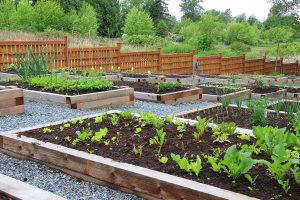- Harness nature’s resources to make homes sustainable with solar energy, rainwater harvesting, and geothermal heating.
- Install a water well to reduce reliance on the municipal supply and natural ventilation to improve air quality.
- Planting a garden not only enhances home aesthetics but also helps in reducing greenhouse gases and improving biodiversity.
- Sustainability efforts at home can significantly reduce utility bills and contribute positively to the environment.
As a homeowner, you have a responsibility towards the environment, and the good news is that there are several ways in which you can take steps towards sustainability. If you want to reduce your carbon footprint, save on energy bills, and take advantage of nature’s resources, this blog is for you! This blog will discuss essential tips for making your home sustainable by harnessing the power of nature’s resources.
Utilize Solar Energy

Solar energy is the most common and popular method of harnessing nature’s resources for a sustainable home. You can install solar panels on your rooftop that absorb sunlight and convert it into electricity. This energy can be used to power your home appliances and lighting. Solar energy is a cost-effective and efficient way of reducing your energy bills. It is also a renewable source of energy and reduces your carbon footprint significantly.
Harvest Rainwater
Another way of harnessing nature’s resources is by harvesting rainwater. You can install a rainwater harvesting system that collects the rainwater from your rooftop. This collected water can be used for irrigation, washing clothes, and cleaning your home. This way, you can reduce your dependence on groundwater and save on your water bills.
Set up a Water Well
If you have access to groundwater, setting up a water well is an excellent way to utilize nature’s resources and make your home more sustainable. You can use the water from the well for drinking, cooking, and other household needs. It also reduces your reliance on municipal water supply and saves on costs.
Just make sure you employ the help of a professional water well drilling service provider. They will ensure that the well is dug in a safe and efficient manner, as well as provide maintenance services to keep it running smoothly. They can also advise on the best location for the well and any necessary permits or regulations.
Use Geothermal Heating
Geothermal heating is another way of harnessing the energy of the earth for a sustainable home. In this system, the earth’s heat is used to heat your home. A ground-source heat pump is installed in your home, which extracts heat from the earth and circulates it around your home through the heating system. This kind of heating is both eco-friendly and cost-effective.
Install Natural Ventilation
Another way of utilizing nature’s resources is by installing natural ventilation. If you live in a place with a moderate climate, natural ventilation can replace the need for air conditioning. You can install windows and skylights that allow fresh air to circulate in your home. This helps in maintaining indoor air quality as well as saves you money on energy bills.
Plant a Garden

Lastly, you can also harness nature’s resources by planting a garden. A garden not only adds to the aesthetics of your home but also helps the environment. It increases the green cover, which in turn helps to reduce greenhouse gases and improves biodiversity. However, starting a garden can be a daunting task. Here are the four essential steps you need to take to ensure a successful garden:
Choose the right spot.
Choosing the right spot for your garden is crucial. Pick a place that gets ample sunlight and has good drainage. You can also consider the size and shape of your garden based on the available space.
Prepare the soil.
Before planting, it is essential to prepare the soil. Remove any debris, weeds, or rocks from the area you have chosen for your garden. Then, add compost or organic matter to enrich the soil.
Choose plants wisely.
Selecting plants that are suitable for your climate and soil type is essential for a successful garden. Consider factors like the amount of sunlight and water required, as well as their growth habits.
Maintain your garden.
Regular maintenance is crucial for a healthy garden. Watering, pruning, and fertilizing are some of the necessary tasks to keep your garden thriving.
Planting a garden not only benefits the environment but also provides fresh produce for your home.
Sustainability is the need of the hour, and your home can play a vital role in this. By implementing these tips, you can make your home more eco-friendly, save on your utility bills, and contribute positively to the environment. Remember, every small step counts when it comes to sustainability. So, harness the power of nature’s resources and move towards a more sustainable and greener future. Start today for a better tomorrow!






